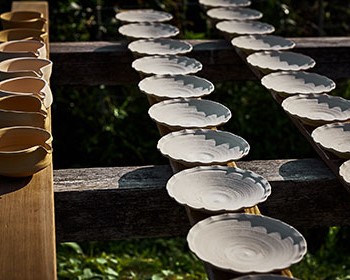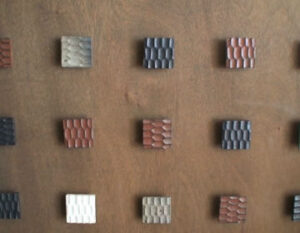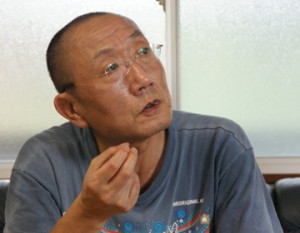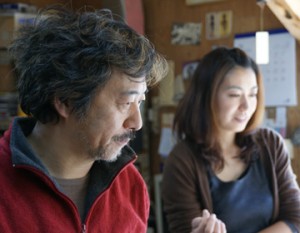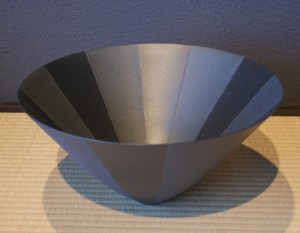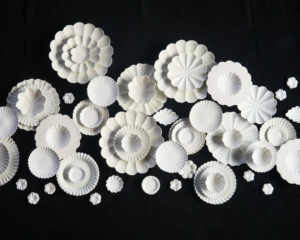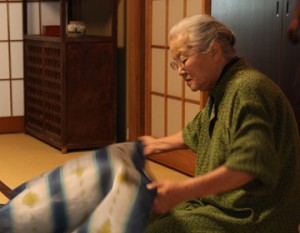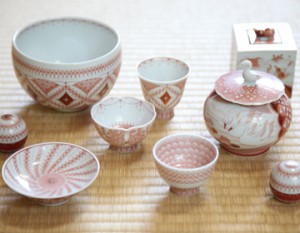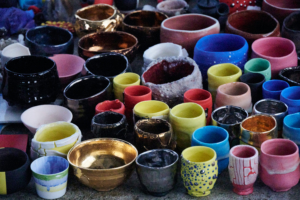Ryutagama, a Karatsu ware kiln
Surrounded by nature, a creek flows through the site, which is rich in ridges, and is lined with workshops and galleries that were built using part of a dismantled old private house. It is not as well-kept as a tourist garden. What you see are trees and weeds in their natural state. The wind blowing through the Ryutagama, a Karatsu pottery kiln in Karatsu City, Saga Prefecture, is a soothing experience in itself. A large climbing kiln can be seen on the premises. At present, gas and electric kilns are the mainstream in the pottery field.
Recently, we use gas kilns for most of our work. We use a climbing kiln five to six times a year. It’s not easy to get a good start, but it’s fun to create unexpected pieces by the movement of the flames,” says Nakazato Taki.

Ryutagama opened by a living national treasure
The Ryuta Kiln was opened by Takashi Nakazato, the fifth son of Muan Nakazato, the twelfth generation Nakazato Tarouemon, who became a living national treasure of Karatsu ware. On the day of our visit, Mr. Takashi was absent, but his son, Taikame, and grandson, Kenta, were in the workshop turning the potter’s wheel. The father and son were working together without exchanging words. The quiet space where only the sound of work could be heard and the air that flowed in the space was very comfortable.
It’s nice this time of year, but it’s hot in the summer and extremely cold in the winter (laughs). Sometimes we turn the wheel while snow is falling.

Mr. Nakazato says.
I believe that pottery should be used. I want to make pottery that can be used in daily life, not just displayed and looked at.
Her works are not expensive, and they are designed to be easy to use. Yet, they have a warmth and feel that enriches our lives, which makes us happy.
Karatsu-yaki, Saga’s pottery
Karatsu-yaki is a type of pottery produced mainly in Karatsu City, Saga Prefecture, and is said to have been produced since around 1580, although there are various theories. The clay used, glazes, and decorative techniques vary widely, and in the world of the tea ceremony, Karatsu-yaki has been called “Ichiraku (one), Ni-hagi (two), and Sankaratsu (three),” and has been used by tea masters. The Karatsu Yakimon Festival is still being held today, with the theme of “marriage of food and tableware.
The kiln firing was to take place just two days later, so I was allowed to observe the firing. The firing takes place in the evening. However, preparations begin in the morning. Molded vessels are packed into the climbing kiln on the site without gaps. This is done while taking into account the fact that the flames and temperature rise at different rates depending on where the vessels are placed. Once tightly packed, the entrance is sealed. When the time comes, the kiln staff and visitors are given sake cups and toast to the success of the kiln firing. Once the fire is started and the temperature rises to 1,200 degrees Celsius, the wood is kept burning to prevent the temperature from dropping. Someone stays by the kiln throughout the night and continues firing until all the wood, which is piled up like a small mountain, is reduced to ashes.
No matter how much I calculate the inside of the kiln, there is no way I can do it all. That’s why it’s so interesting and I can’t stop,” Mr. Nakazato says.
When the calculations are exceeded, the warmth and texture unique to Karatsu-yaki are born.




